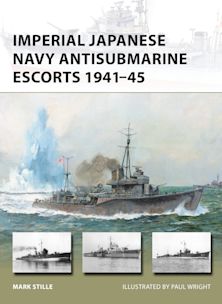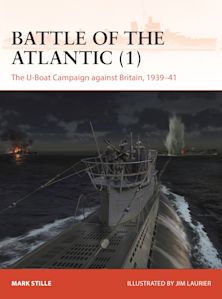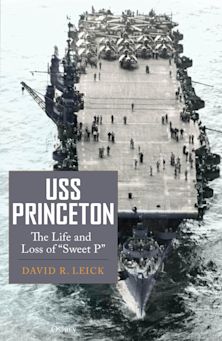USN Submarine vs IJN Antisubmarine Escort
The Pacific, 1941–45
USN Submarine vs IJN Antisubmarine Escort
The Pacific, 1941–45
- Delivery and returns info
-
Free UK delivery on orders £30 or over
Description
This fully illustrated study examines and compares the roles of the US Navy submarines and the Imperial Japanese Navy's anti-submarine warfare capabilities during World War II.
In 1941 and 1942, US Navy submarine operations in the Pacific were largely ineffective, hampered by faulty torpedo design, conservative tactics, and insufficiently aggressive submarine captains. Eventually, though, a new generation of wartime submarine commanders, combined with reliable torpedoes, new generation boats, improved intelligence, and advanced radar, inflicted devastating losses on Japanese shipping. Antisubmarine warfare was initially accorded a low priority by the Imperial Japanese Navy; the lack of ASW escorts and modern weaponry, and an inability to develop tactics, resulted in devastation to vital convoys, and hampered its ability to deter and destroy enemy submarines.
This book explores all these factors, and the role that US submarines played in supporting the major fleet operations in the Pacific Theater, notching up almost 500 patrols by war's end for the loss of 52 submarines to the Japanese. The technical and tactical developments implemented by the opposing sides are documented in detail, including US improvements to submarine design and weaponry and more aggressive tactics, and the Japanese development of destroyer escorts, changes to depth charge design, and improved submarine detection capacity.
Table of Contents
Chronology
Design and Development
The Strategic Situation
Technical Specifications
The Combatants
Combat
Statistics and Analysis
Bibliography
Index
Product details
| Published | 20 Jan 2022 |
|---|---|
| Format | Paperback |
| Edition | 1st |
| Extent | 80 |
| ISBN | 9781472843050 |
| Imprint | Osprey Publishing |
| Illustrations | Colour illustrations throughout, including profiles, technical drawings, battlescene artworks, maps and photographs. |
| Dimensions | 248 x 184 mm |
| Series | Duel |
| Short code | DUE 117 |
| Publisher | Bloomsbury Publishing |

Resources
Discover More
Visit our exclusive member's website to see artwork, maps, and more from this book.

Resources
Book Vote
Tell us what titles you would like to see published by Osprey, then vote for your favourites in our monthly book vote!



























